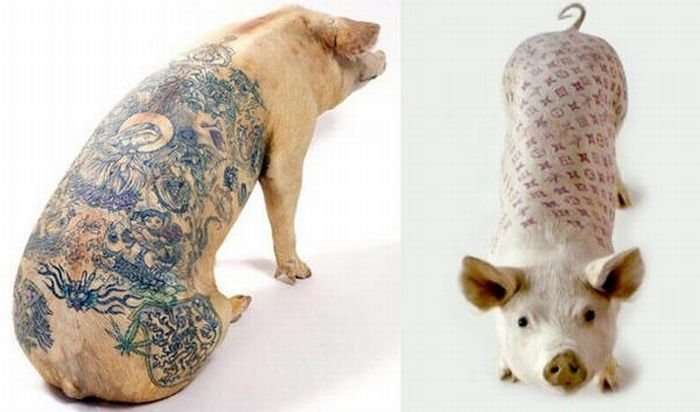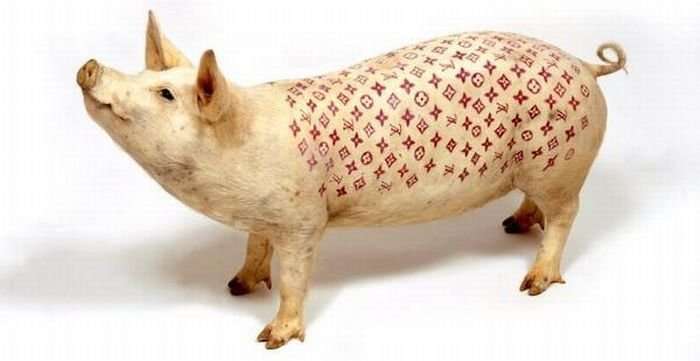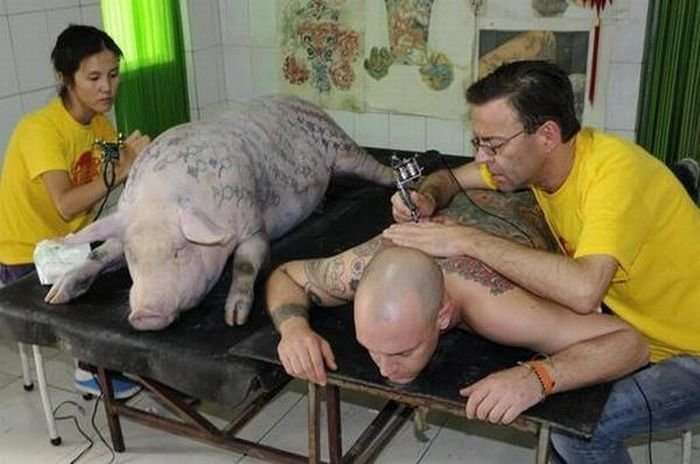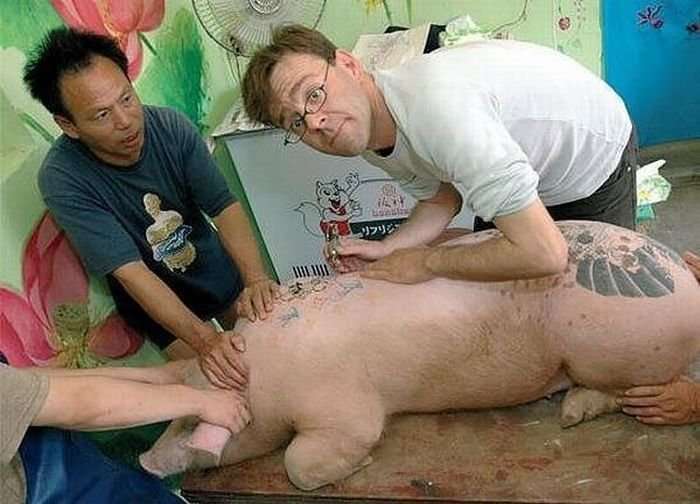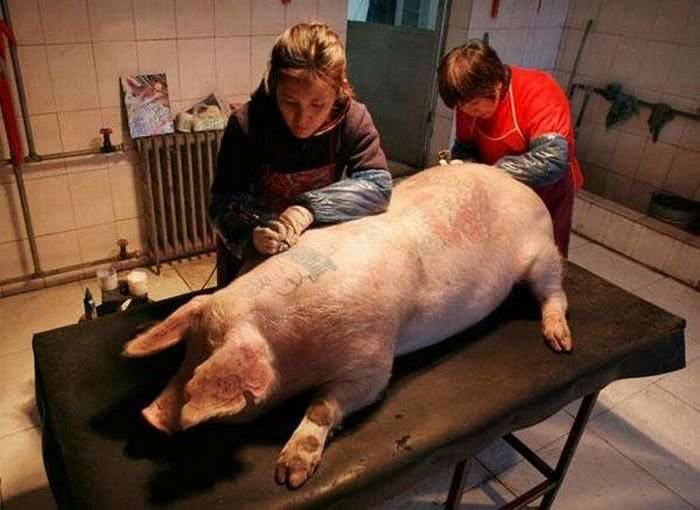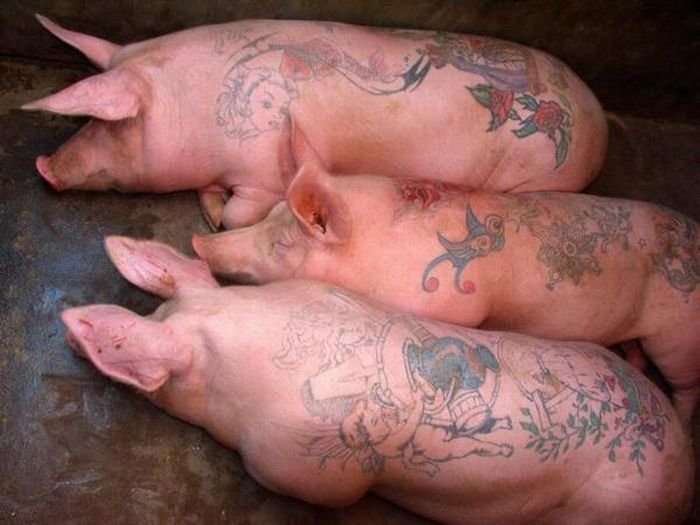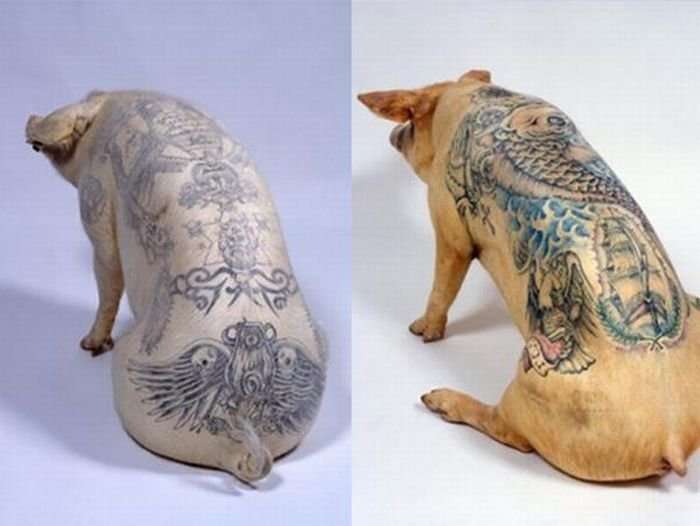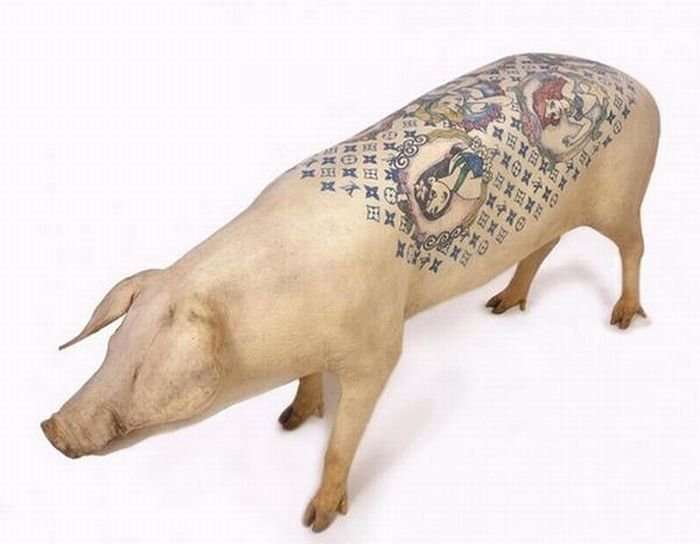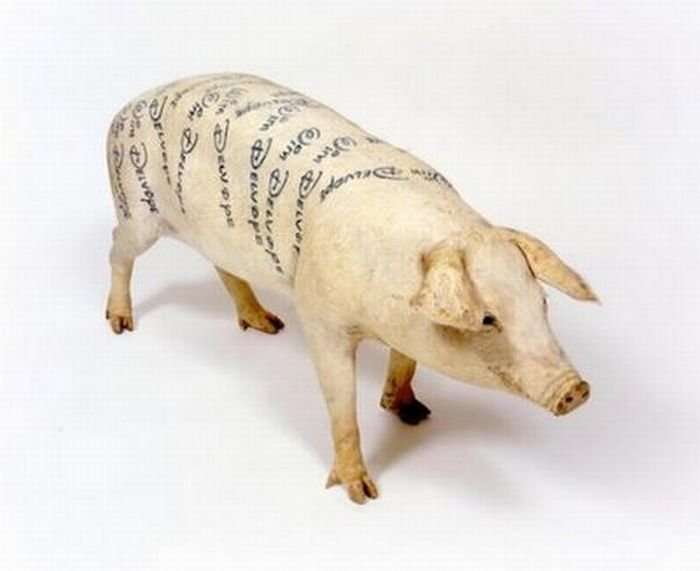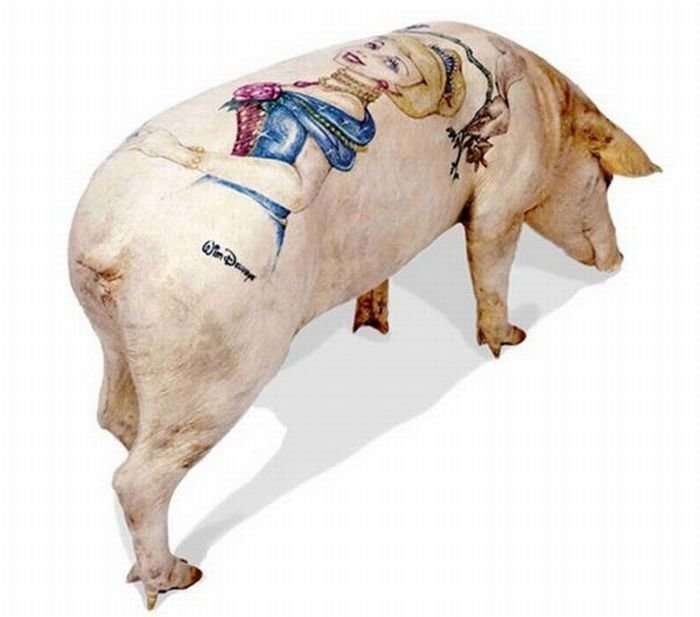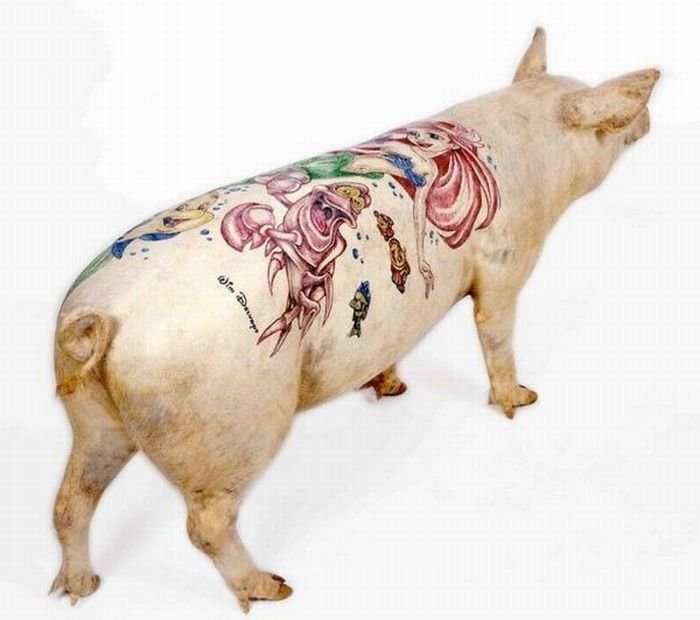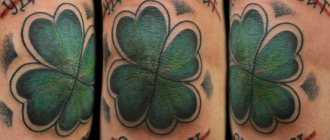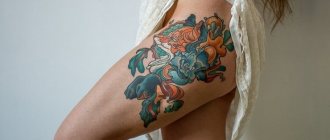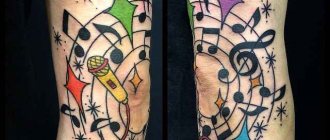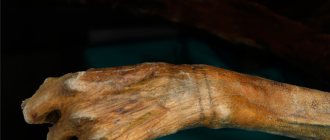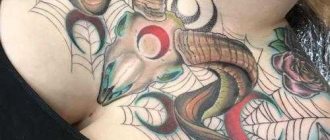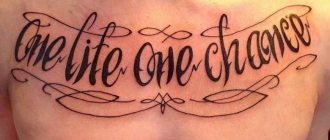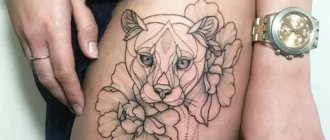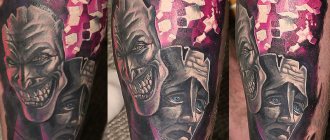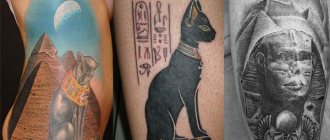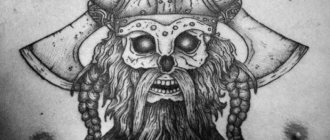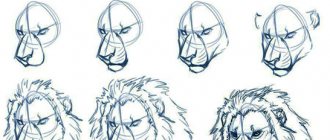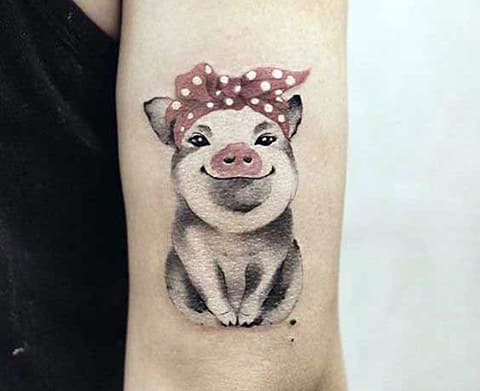
Tattoo Pig
Tattoos with pigs are quite rare for connoisseurs of body art. Perhaps this is due to the role of the victim that domestic pigs are forced to play, associations with uncleanliness. However, such works do exist, and today we will discuss what the meaning of the pig tattoo actually is, based on the perceptions of our ancestors and symbolism in different cultures.
The pig in tattoo art
Realistic animal tattoos done by talented artisans look impressive. Realism allows you to accurately convey all the details of the appearance, making the tattoo barely distinguishable from a photograph. This style is considered the most difficult to perform, and for good reason. Therefore, before you sign up for a session, be sure to look through the master's portfolio.
If you want to move away from the canons of realism, view photos of new-sculpted pig tattoos. In fact, despite the consonantal name, it didn't take much from oldschool. The style retains the brightness of colors and sharpness of outlines, but the work looks much more interesting, more detailed. Much attention is paid to the tattoo's subject and the emotional message it conveys. There are cute cartoon piggies, funny pink piglets, anthropomorphic animals in human clothes, imitating human behavior. These works are colorful, bright, eye-catching.
When choosing a place on the body, you have to rely on the shape of the sketch. If you order an individual sketch, the master himself will tell you the right place for it or will create a drawing that will fit well on the chosen part of the body. Elongated sketches look great on the forearm, shin or ribs, round - on the scapula or chest. The shoulder and thigh are the more universal places; drawings of almost any shape look good on them. But, of course, everything depends on each individual sketch.
All about pig tattoos
The real fame of tattooed pigs came thanks to the artist Wim Delvoy, who picked up the idea in the 1990s. At first he only covered pig skins with tattoos, but then he moved on to live pigs as well. He covered them with drawings of daggers, Disney princesses, and even Russian prison tattoos and actually built a huge factory producing tattooed pigs.
Fearing complications with European animal rights laws, in 2004 Wim moved to China, where he bought an entire farm near Beijing and named it Art Farm. Each animal is cared for, fed, and allowed to live a natural life after being tattooed under anesthesia. That is, in fact, Vim provides them with a better life than if they were sent to slaughter. They get tattoos done by three artists at once, so that they can have time to do the design while the pig is under anesthesia.
They even have a special person with them to moisten their skin to keep the tattoo in good condition. In all the videos, the pigs walking around the farm seem to be quite enjoying themselves, but there is an ethical issue in the process: after the pigs die, they are skinned and sold to collectors - the one who was waiting most for his pig was a Louis Vuitton symbol collector.
Tattooed pigs turn into a great business - pig skins sell for hundreds of thousands of pounds at auction. Animal welfare organizations make noises, arguing that the animals did not give their consent, and videos show the pigs under anesthesia reacting painfully to the tattooing process anyway. The two main protests are that the animals are suffering unnecessarily and are being abused for commercial gain.
In an interview with Vice magazine, he said he's done tattoos on art critics, collectors and dozens of different assholes-so what difference does it make if he does it on pigs now? To further tease his audience, he calls himself a vegetarian in one sentence and says he washes his hands a hundred times a day. Some have rejected Wim for several exhibitions, while others are happy to let him into their galleries. In addition, even without exhibitions abroad, his farm is full of people who want to see his art, just as there are collectors who want to buy the skins.
It should be noted that Wim tries to take only live animals to exhibitions, which may not behave in the best way in a museum space; he considers it sanctimonious and a compromise to take only skins.
Why does Wim do it at all? This is just one strand of his work exploring the notion of value in the art world, as well as society's response, the essence of ethics and law: "These pigs are a cute allegory that makes us think about what art means to us and where the line is drawn between what is art and what is not art." And then Delvoy adds that he's always wanted to grow the art instead of producing it: "I tattoo pigs because they grow up fast and are much better suited for tattoos than fish. I tattoo them while they're young, and I love how the artwork stretches and changes over time."
Tattoo pig - a duality of perception
Two perceptions of a pig tattoo can be distinguished:
- Negative. Usually it is a creepy wild boar - a symbol of stubbornness, loyalty, aggression. On the tattoo, it can be seen with blood on its fangs to enhance the expression and significance of the image. The owners of the tattoo are prone to exasperation and irritation, do not like those around them, show primitive heroism.

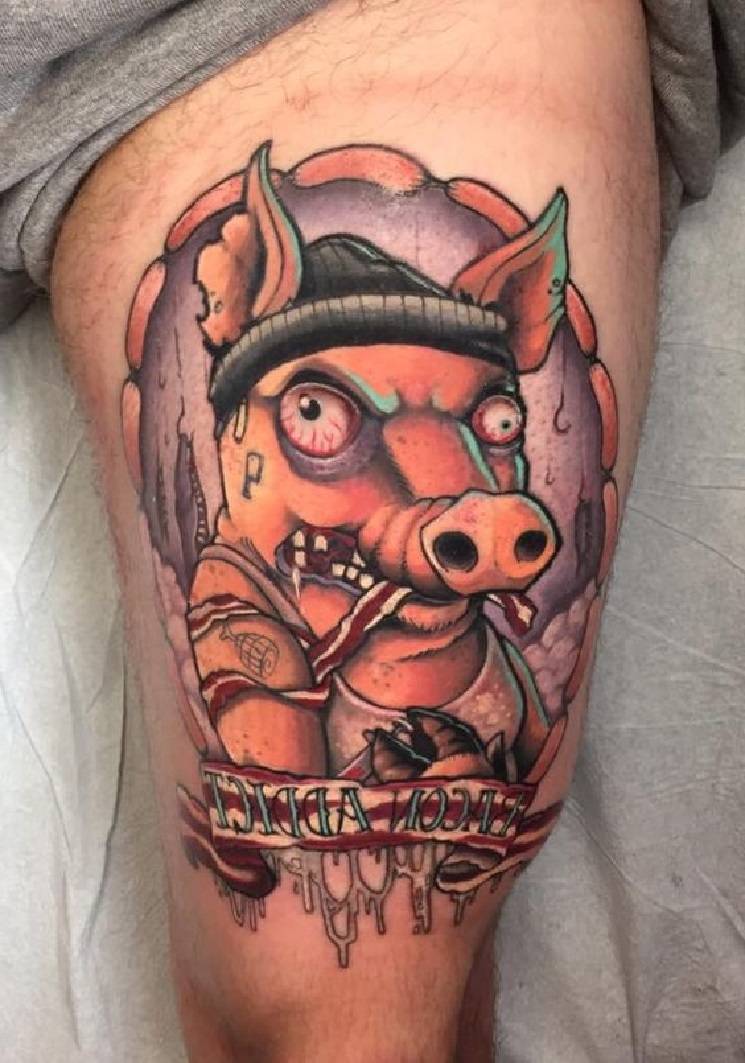
- Positive. The choice falls on the drawing of a cute piglet with a pink heel, indicating a romantic nature and the presence of humor. The owners of tattoos of this type are most often optimists, calm to criticism and satisfied with their own lives.

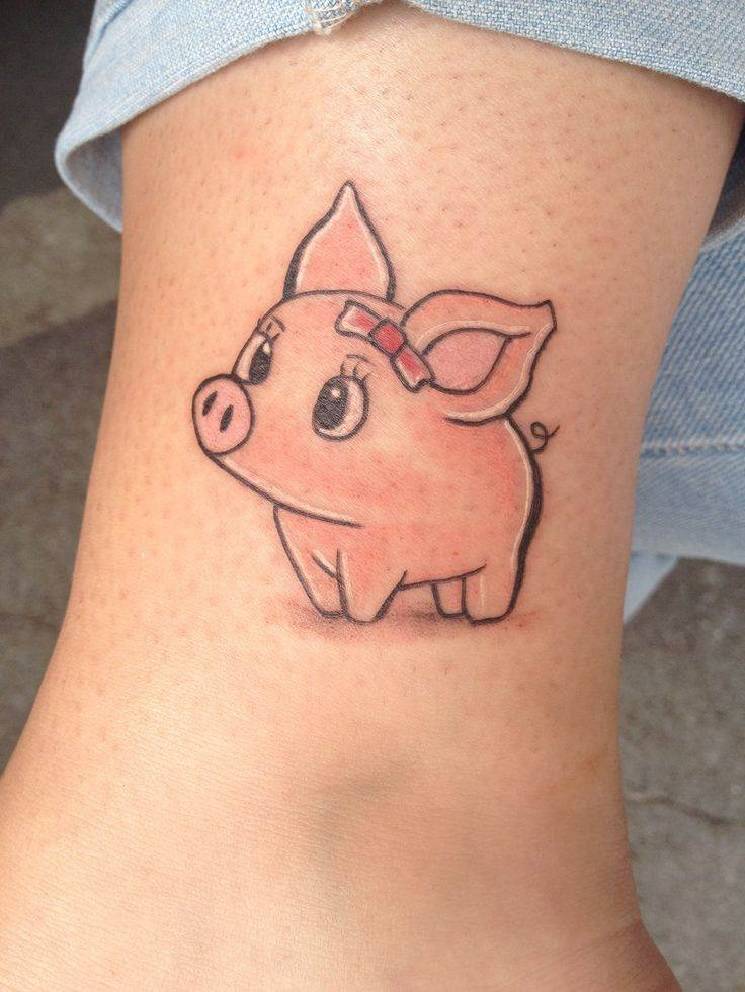
An interesting fact from the world of tattoos offers a combination of images of a pig and a rooster. According to the beliefs of sailors, if you put on the right leg pig, and on the left - a rooster, the probability of drowning during the voyage is zero. The roots of the legend go back to the distant past, but even today many sailors wear similar paired tattoos.
The tattoo is everyone's personal choice. It is good when the picture is important for the bearer, attractive to others and helps in various affairs. Whether it's a boar, a pig or a piglet is not important.
Frankenstein pig carcasses (PHOTO)
Pig tattoos, sex under an X-ray beam, gothic concrete mixers... This is not the notes of a madman. It's a list of art achievements by Belgium's most famous artist, Wim Delvoie. He had already shown live pigs covered with provocative tattoos in Moscow. This time he brought their skins. "MK" learned from the artist how to make art out of a pig.
We're talking at Diehl+Gallery one. On the walls are the hairy skins of tattooed pigs. On the second floor of the gallery are X-rays that show all the anatomical details. In the center of everything is a 5-meter Gothic tower...
- Wim, what are the themes of your art tattoos?
- It's like an encyclopedia in the world of tattoos," says the cheerful artist vividly. - In the art of tattoos, there are many recurring themes that people are used to. I collect all the classic tattoo patterns and take them to the point of absurdity. If I put a drawing of Christ on a pig, it doesn't mean that I believe in it or that she'll believe in it. It's the same with rock and roll and any theme. I'm showing triviality.
- A tattoo is a pain. Don't you feel sorry for pigs?
- When I choose pigs, I feel sorry for the ones that stay. I would like to take all of them, because I love animals very much. When a pig is fattened up for meat, it's much worse for the animal. After a few months of intensive feeding, they can no longer stand on their feet. The bones just can't take the weight.
- But killing is still killing...
- I have pigs that live much longer than those raised for meat. I, for one, am a vegetarian altogether. My charges are in the movies. Two others, Omelet and Hamlet, were involved in biological experiments. They are still alive.
- How long have you been hooked on animals?
- I made my first drawing on the skin of a dead pig in 1995-1996. And in 1998 I exhibited four living pigs, four of them tattooed. At that time I could not yet imagine that I would do 20 pigs a year. In the beginning it was difficult to gather the necessary staff: doctors, tattoo artists and staff.
- Ten years later, what we couldn't imagine before has turned into a real industry. You have your own farm in China.
- At first, in 2003, I just paid a Chinese farmer to watch my pigs. Then I assembled a team. But the following year I decided to rent a farm. And a year later I bought it.
- So how do you turn ordinary pigs into highly artistic pigs?
- We buy pigs every spring. When they reach a weight of 30-40 kg, we start tattooing them. The pigs can only be put to sleep for two hours a week to draw them. They can't take more than that. We need to start working with 20 pigs in February to have them ready by November. Already by May, the pig weighs 100 pounds. The tattoo stretches. That is, nature itself refines the pattern.
- What is the nature effect?
- You make a drawing, and nature does the rest. The colors get lighter, the edges get blurry. The image changes a lot. It's a beautiful metaphor for life. It can be compared to an art market. Every person who buys a painting expects the price to go up. I scoff at this idea. I get a real increase, a natural increase, in my art.
- You live in Belgium. Do you visit your favorites often?
- Until this year, I went every month to follow the work. I have three tattoo artists. But I also do tattoos myself.
- What about animal welfare organizations. Do they pester you?
- There was one such case once. One organization held a rally right in my exhibition while I was in China. They wanted to draw attention to themselves at the expense of me, to make their PR. They actually realized that I keep animals in much better conditions than anyone else.
- Do you have a tattoo on your body yourself?
- I'm not a pig.
- Tattooing pigs is not a complete list of your provocative ventures. Your X-rays show all the details of people's sexual relationships. How was this series created?
- A good couple became its heroes. They left their children with their grandparents to come to me "for x-rays. I took the pictures right in the hospital. I'm a crazy doctor... Dr. Frankenstein!
- Bold! How are you allowed to do that?
- I had a professional doctor behind the glass with me. And I was there to tell the lovers what to do and make sure they didn't go over the edge of the x-ray. Now I've already bought an X-ray machine for my home.
- To make sure that the "right body parts" were clearly visible, did you do something on purpose?
- There's a special drink one takes to make the organs inside the body clearly visible. Doctors always give you this liquid to drink before an x-ray. I thought, why not smear the "right parts of the body" with this liquid. It's called barium sulfate.
- Did the photo shoot often end with sex?
- Of course it did. And if a man suddenly failed, if he was nervous, they would give him an injection of a stimulant.
- Was it bad for your health?
- We did one couple every six months. There were a lot of different couples and a lot of shoots. So there was no loss.
- After pigs and x-rays, did you come up with anything new?
- Gothic architecture. I started working with that theme in the late '90s. But my goal now is to create a real life-size building.
Birking
Modern pig farms use the most convenient way of tagging - microchipping. The other methods are also common and widely used in pig farms.
At the same time, it is mandatory to put plastic tags of VIJ design on the specified sex and age groups of pigs, which allow to quickly and accurately identify the animal at a distance of 3-5 m or more, thereby reducing the time for selecting pigs during insemination, veterinary treatments, etc.
The industry produces tags in a variety of colors, allowing them to be used to code farms, breeds, breed combinations, etc.
The tag is attached to the outside of the animal's left ear. To do this, a hole is punched in a place where there are few large blood vessels. On the outer side of the ear, a pin (foot) of the tag is inserted into the hole, and on the inner side, a fixing fixing ring (washer) pre-heated in hot water is put on the pin, after which the washer is snapped on.
If an animal loses a tag, it is identified by an individual number which was tattooed in a breeding facility or in a breeding farm. Piglets produced at the complex are tattooed not with individual but with breeding numbers which are used in evaluating sows and boars by progeny, breed and line combinations, culling of sows by diseases and productivity.
The pig industry uses different versions of ear tags that are inserted into the pig's pierced ear hole. These tags are made of polyurethane and are attached with special tongs. Various colors of tags are used in pig breeding.
This method of tagging is the most popular because of the low cost, as well as out of humane treatment of the animals. Pigs tolerate the tagging procedure very easily, without blood.
There are a number of disadvantages with this method of tagging: - mechanical damage tags (pigs can bite the tag, fasteners can wear out, fasteners can loosen due to high ammonia in the air) - the number on the tag over time can be erased (if it is applied in the marker)
Examples of modern piglet (round) and queen tags, tongs to install ear tags:
History of the emergence of the Pig tattoo
Both pigs and tattoos are deeply rooted in humanity's past. Domesticated animals, numerous deities and the desire for symbolic adornment of one's own body naturally intertwined with each other, giving rise to interesting cultural habits and rituals.
The image of the pig in the tattoo depended on how a particular nation saw the grunting creature - saw it as a symbol of fertility and wealth, a strong enduring creature or an impious dirty animal.
The ancient traditions of various nations indicate the place of the pig in mythology and in the symbolic perception of the common people:
- Celtic folklore. Pigs are a gift of the god Manannan, a miracle granting immortality and a hearty life.
- Ancient Egyptian Civilization. The pig is the embodiment of Isis, goddess of fortune and lord of life. And also a sacred animal of the goddess Hathor, responsible for fertility and well-being.
- Welsh mythology. Keridwen - goddess-pig, giving natural wealth and prosperity.
Many peoples associated a pig rich in litter with prosperity, motherhood, and female happiness.
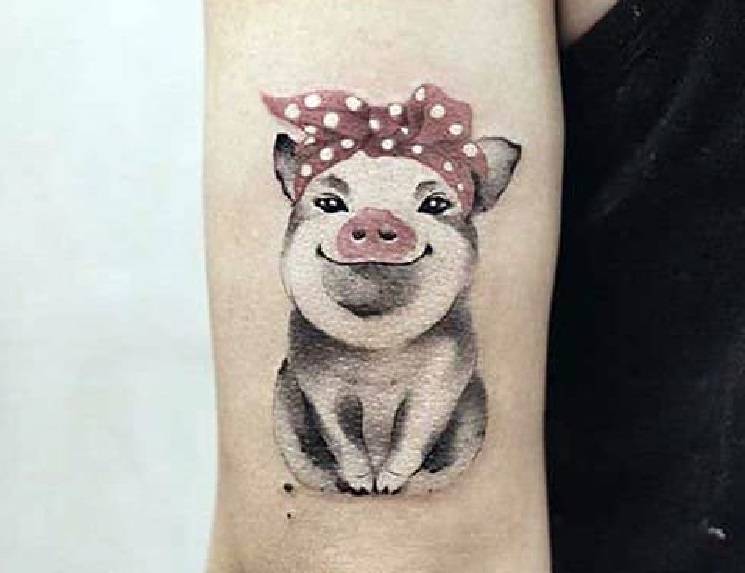

Interesting facts
Before you go to the tattoo parlor, it is worth learning as much as possible about the chosen plot. For example, it is important to determine what kind of pig you want to see on your body. After all, the domestic pig is a symbol of sacrifice, while the wild pig, on the contrary, represents power and aggression. In ancient Scandinavia the boar was a symbol of warriors, brave and always ready to repel offenders. The tattoo of a pig was considered a talisman that gave masculine strength.
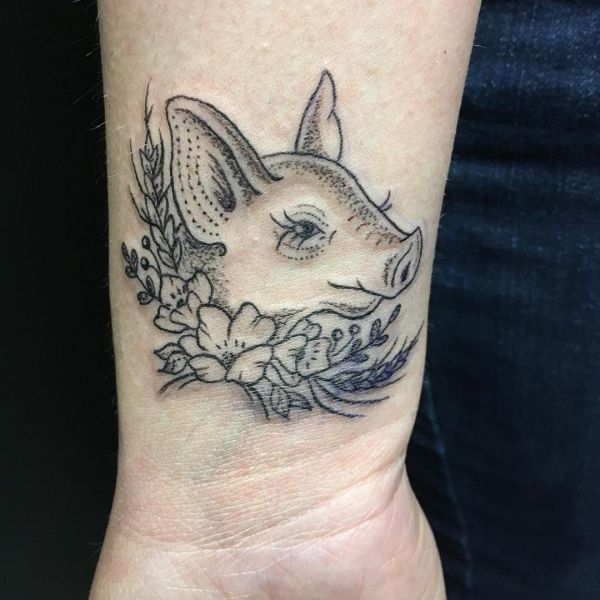

Tattoo of a pig's head as an outline on the wrist
In Europe, a tattoo of a pig was made by hunters who thus alluded to the fact that they always return with the spoils. In Japan, a very popular tattoo with a white boar: according to tradition, this animal can give the bearer of the tattoo superpowers.
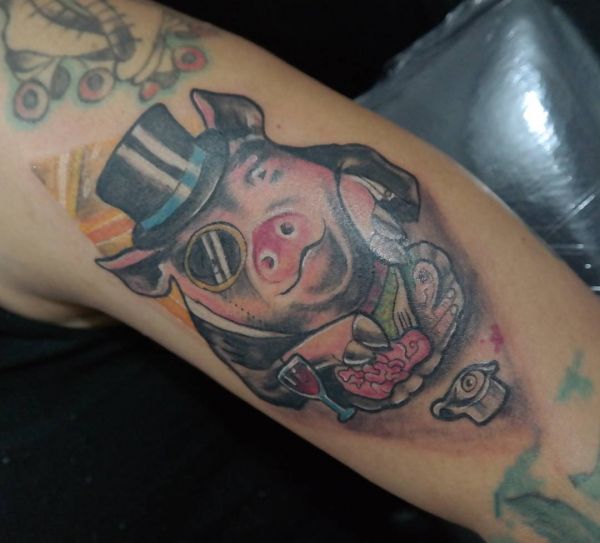

Tattoo of a pig in a hat
Deification and disgust: attitudes toward the pig in ancient cultures
The veneration of pigs goes back to antiquity. In Malta, archaeologists found an image of a pig nursing thirteen piglets, which dates back to the Neolithic period. In many cultures the pig was revered as a symbol of the moon and an attribute of the Great Mother. The reason for this was the fertility of this animal.
In Sumerian tradition, the pig was the companion of the goddess Tiamat, in Scandinavia - Frey. In Egyptian mythology there are references to Seth attacking Horus, taking the form of a black boar, and damaging his eye. In Greek mythology there are two versions of the story of Zeus' childhood: according to one of them he was nurtured by a goat and according to the other by a pig.
In Celtic mythology the goddess Keridwen - the Great Mother - appears in the guise of the animal, while the fertility goddess Thea is often referred to as the lord of pigs. The folk hero Manannan, according to legend, owns a whole herd of pigs, no matter how many are eaten, the number of animals remains the same.
